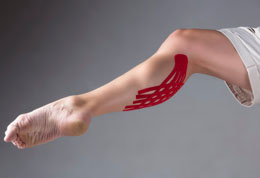The region on the back of the leg, just below the knee is known as calf. This article provides information regarding the causes and methods of treatment of calf leg pain.

Pain in the calves is one of the most common complaints among runners, joggers, track and field event athletes, sportspeople, etc. This condition can be categorized as either pain in the lower calf leg or pain in the upper calf leg. It is also categorized or graded depending on the severity of the injury (i.e. whether it is a calf muscle strain, calf muscle pull, or a calf muscle tear). This painful condition can occur due to a variety of reasons.
Causes
Calf pain is experienced by a lot of active sportsmen and sportswomen, but they are not the only candidates. It can affect anyone, anytime. Many a time, a certain physical activity can become the contributing factor towards the pain. Following are some of the possible causes:
- Running and jogging are one of the most common causes of pain in the calf muscles. All runners, right from the casual joggers to serious athletes, sprinters, and long-distance runners are susceptible to calf pain. Insufficient cushioning, inappropriate footwear, improper running techniques, running on hard surfaces, etc., can be some of the reasons for developing ache in this part of the leg.
- Over-training (in case of running or any other sport which involves a significant amount of running) is also a common cause. If you subject your leg muscles to an enormous amount of workload (or if you suddenly and disproportionately increase your training workload), then your leg muscles are bound to give way at some point of time. In such cases, you may experience cramps, sharp muscle pain, etc.
- A pulled calf muscle is responsible for a large number of cases of such an ailment. If you slip while running (or while playing a sport such as tennis, badminton, etc.) and end up dragging your foot across the floor surface, then there is every possibility of you pulling your calf muscle or straining it. Regardless of whether it is a pulled or strained calf muscle, you will undoubtedly end up with a sharp, jabbing pain in the lower half of your leg.
- Sometimes, stiffness in the calf muscle can also lead to pain. This can happen if you directly terminate your physical activity without any post-exercise stretches or cooling down routines after an extensive session of exercising, training, or long-distance running.
- Varicose veins, Achilles tendonitis, Baker's cyst, plantaris tendon rupture, atherosclerosis, etc., are some of the other possible causes.
Treatment
If it happens to be a sports induced calf injury, or one that has resulted due to over-exertion or over-training, then the R.I.C.E. method of treatment is the first remedial method that you should turn to. R.I.C.E. is an acronym for
'Rest, Icing, Compression, and Elevation'. Rest your leg on a chair or a stool. Wrap a couple of ice cubes in a soft hand towel and apply it on the affected area of your leg. Later, wrap the calf using a compression bandage or a crepe bandage. When sleeping, use a couple of pillows to elevate and rest your leg so that the blood (in case of internal bleeding) will not collect near the injured area, but will flow down. Sometimes, something as simple as stretching your calf muscles by performing toe raises, or massaging the calves to soothe the tired muscles, can help keep calf pain at bay.
If it happens to be a mild calf sprain, then a few days is what it will take for the injury to heal. However, if the pain persists (or worsens) beyond the initial couple of days, then it is best that you consult a physician for further medical treatment.
Disclaimer:
This Buzzle article is for informative purposes only, and should not be used as a replacement for expert medical advice.


 Pain in the calves is one of the most common complaints among runners, joggers, track and field event athletes, sportspeople, etc. This condition can be categorized as either pain in the lower calf leg or pain in the upper calf leg. It is also categorized or graded depending on the severity of the injury (i.e. whether it is a calf muscle strain, calf muscle pull, or a calf muscle tear). This painful condition can occur due to a variety of reasons.
Pain in the calves is one of the most common complaints among runners, joggers, track and field event athletes, sportspeople, etc. This condition can be categorized as either pain in the lower calf leg or pain in the upper calf leg. It is also categorized or graded depending on the severity of the injury (i.e. whether it is a calf muscle strain, calf muscle pull, or a calf muscle tear). This painful condition can occur due to a variety of reasons.